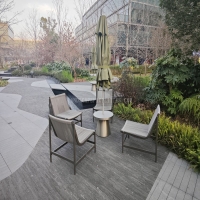Welcome to the website for landscape facilities products and knowledge.
How does the design of the trash can impact its ability to be customized for specific locations?
The design of a trash can plays a pivotal role in its adaptability to different environments, ensuring it meets the unique needs of specific locations. A well-thought-out design considers factors like size, material, and functionality, allowing for seamless integration into urban, commercial, or residential settings.
For instance, public spaces require durable, high-capacity bins with secure lids to prevent littering, while office settings may prioritize sleek, compact designs with recycling compartments. Customizable features such as color-coding, modular compartments, and smart sensors further enhance location-specific utility.
Material choice also impacts customization. Stainless steel bins suit high-traffic areas due to their durability, while eco-friendly materials align with sustainable initiatives. Additionally, ergonomic designs improve user experience, encouraging proper waste disposal.
Ultimately, a trash can’s design determines its effectiveness in a given location, balancing aesthetics, functionality, and environmental goals. By prioritizing customization, designers can create waste solutions that are both practical and visually cohesive with their surroundings.
Related search:

Recommendation
Metal structure rattan chair without armrests for single person, with woven seat and backrest.